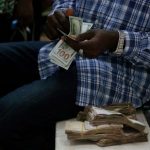Sports
Five Expert Tips on How to Spot Fake Pokémon Cards
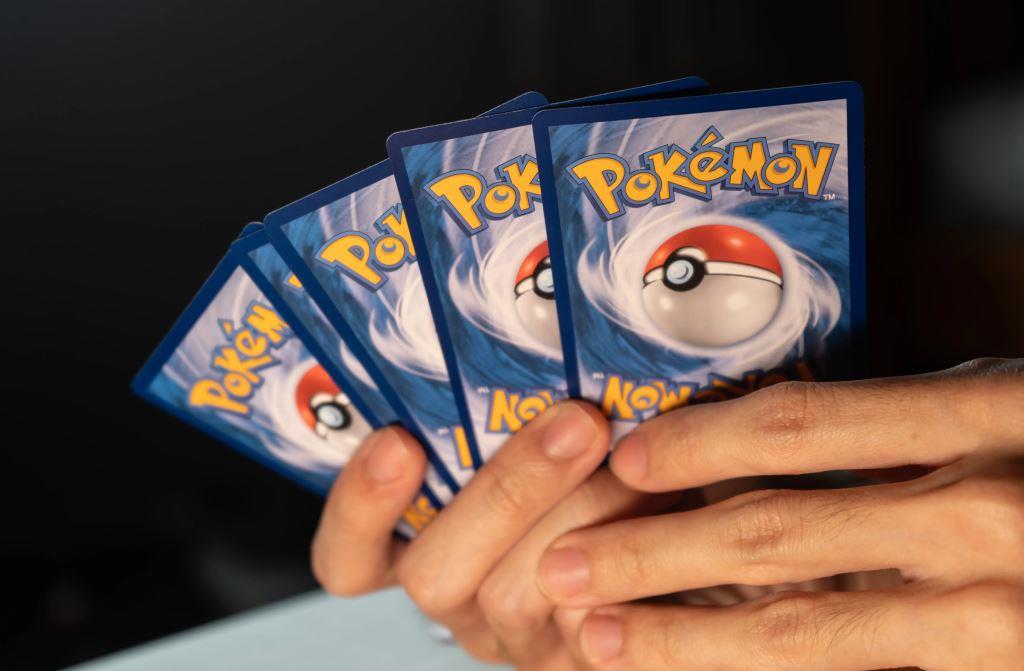
The Pokémon card market has grown considerably since the franchise first came to the fore in 1999, with over 190 collections of cards now in circulation.
Naturally, this has led to a lot of fake cards being manufactured and sold to collectors, sometimes for thousands of dollars, fooling even the most experienced into believing they are buying genuine cards.
Ahead of Pokémon Day on 27th February, the online gaming information site Indivisible Game has outlined what collectors can do to identify forgeries and avoid spending on counterfeits.
Compare Card Printing Quality
Authentic Pokémon cards are printed with high-quality materials and precision. Examine the printing quality, colour vibrancy, and detail as counterfeit cards may have blurry images, inconsistent colours, or pixelation.
Pay attention to the overall print resolution and clarity of text and symbols, while also checking for grammatical errors within the text, which is an easy way to spot a fake card.
Check the Card Texture and Material
Pokémon cards typically have a specific texture and feel, while counterfeit cards may have a smoother or glossier finish.
Run your fingers over the card’s surface and compare it to known authentic cards. Genuine Pokémon cards often have a slightly grainy texture, while fakes may feel slick or too smooth, so you should be able to tell the difference just by touching the surface.
Inspect the Holographic Foil Elements
Many Pokémon cards in various collections feature holographic foil patterns. Counterfeiters often struggle to replicate these holographic effects accurately – so, look for irregular patterns, such as missing details, inconsistent shine, or a lack of depth.
The authentic holographic foil should display a distinct and consistent pattern when tilted under a light. A quick test is to compare the energy symbol with other cards; a common trait in fakes is that this is slightly larger or distorted.
Verify Card Size and Thickness
Authentic Pokémon cards adhere to specific size and thickness standards, which differ for each collection. Counterfeit cards sometimes deviate from these dimensions, so be sure to use a ruler to measure the card’s length, width, and thickness compared to a known authentic card from the same set. As well as this, bend the card a little, as fakes often feel flimsy compared to high-quality real ones.
An easy way to spot a certain fake is to examine the edge of the card closely. Real Pokémon cards have a very thin sheet of black between the cardboard; it’s only visible up close, but you’ll be able to see the darkness between the two thin halves of the card. Without this, it’s not a genuine Pokémon card.
Be Familiar with All Characters and Stats
For those buyers who aren’t familiar with all 1,025 Pokémon characters, it’s easy to be duped by fake cards that have character images from other franchises that have been heavily influenced by Pokémon, such as Digimon. The sheer volume of characters can make it tricky to be certain from memory alone, so do your research and verify the picture is of an official Pokémon.
Specific stats can also reveal a card’s authenticity; for example, if the HP is over 340 (aside from a few unique rare cards), it is likely to be fake. Verifying the attacks on the card will also confirm if they are real, as counterfeit cards have previously listed some that don’t exist.
Commenting on the expert advice, a spokesperson from Indivisible Game said: “It is truly incredible that after a quarter of a century, Pokémon cards remain as popular as they were when they first appeared.
“Pokémon Day always sparks even more interest in the franchise and, naturally, will see new and old fans starting a card collection. Fortunately, these tips can help budding collectors avoid being tricked into buying fake cards.”
Sports
Aston Villa vs Arsenal Lead a Packed Football Weekend Live on SuperSport
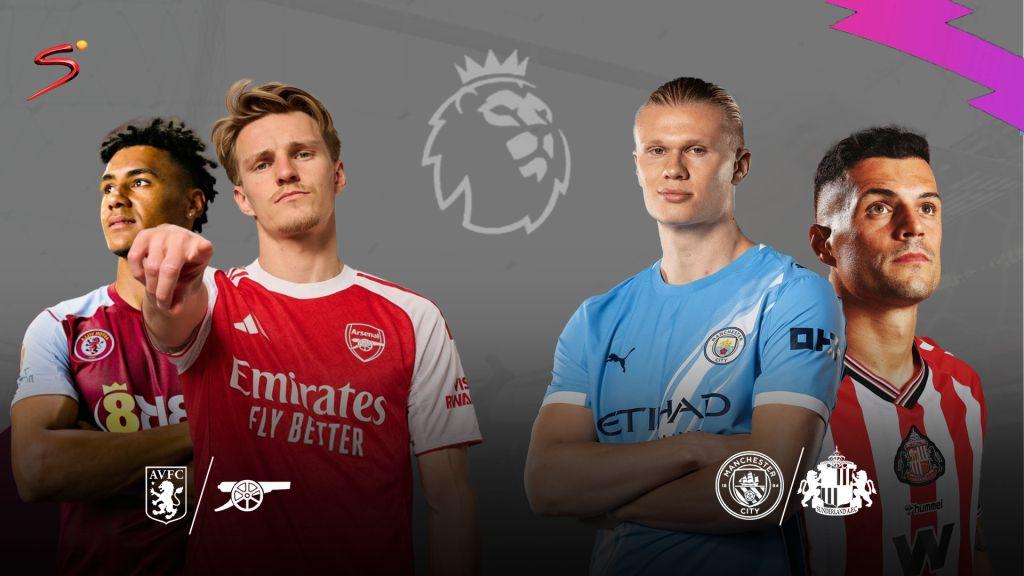
Club football continues with major clashes across Europe’s top leagues, headlined by Arsenal’s trip to red-hot Aston Villa, and a strong slate of fixtures in La Liga, Serie A, and Ligue 1. All matches will be live on SuperSport across DStv and GOtv.
Premier League: Villa Test Arsenal’s Mettle, City Push the Pace
On Saturday at 1:30 p.m., Aston Villa host league leaders, Arsenal. Villa have surged into third with four straight wins, including a dramatic 4–3 result against Brighton. Arsenal remain five points clear after a composed 2–0 win over Brentford.
At 4:00 p.m., Man City welcome Sunderland to the Etihad. City edged Fulham 5–4 in a wild contest and sit second, one point ahead of Chelsea. Sunderland arrive with just one win in their last five.
At the same time Tottenham face Brentford. Spurs remain winless in six and have slid to 11th, while Brentford, coming off a 2–0 loss to Arsenal, continue to battle inconsistency. This match airs live on SS Football (GOtv Ch. 61, DStv Ch. 205).
Leeds United meet Liverpool at 6:30 p.m. after ending their losing run with a morale-boosting victory over Chelsea. Liverpool, held 1–1 by Sunderland, need rhythm and stability after several poor results.
On Sunday at 5:30 p.m., Fulham host Crystal Palace. Fulham showed impressive fight despite losing 5–4 to Man City, while Palace remain solid in fifth with three wins in their last six.
The round wraps up on Monday at 9:00 p.m. as Wolves face Man United. United have managed one win in five, while Wolves stay bottom with twelve losses in fourteen.
La Liga: Barca Protect Lead, Madrid Stay Close
On Saturday at 2:00 p.m., Villarreal face Getafe. Villarreal are third after five straight wins and sit four points behind Real Madrid with a game in hand. Getafe have won three of their last five and remain difficult opponents.
At 6:30 p.m., Barcelona travel to Real Betis. Barça sit top after extending their winning run to five matches, while fifth-place Betis aim to close the seven-point gap to the Champions League spots.
At 9:00 p.m., Athletic Club host Atlético Madrid. Both sides suffered defeats to La Liga’s top two in midweek. Atlético have won eight of their last ten but remain fourth behind Villarreal, while Athletic have struggled with only two wins in seven.
On Sunday at 9:00 p.m., Real Madrid face Celta Vigo. Madrid ended a three-game winless spell in La Liga with a strong victory over Athletic Club and look to reclaim top spot. Celta have picked up form with three wins in their last five.
Serie A: Napoli vs Juventus Takes Centre Stage
On Saturday at 6:00 p.m., Inter take on Como. Inter, sitting third, continue to chase the top after beating Pisa, while Fabregas’ surprise package Como remain fifth with only one defeat this season.
On Sunday at 3:00 p.m., Cagliari host Roma. Roma, currently fourth, look to recover from their narrow home loss to Napoli. Cagliari remain desperate for points after a close defeat to Juventus.
At 8:45 p.m., Napoli meet Juventus in the weekend’s marquee Serie A fixture. Second-placed Napoli go into the game confident after beating Roma, while seventh-place Juventus aim to climb the table after defeating Cagliari.
The round concludes Monday at 8:45 p.m. as Torino host AC Milan. Milan remain league leaders and seek another steady result to hold off Napoli and Inter.
Ligue 1: Marseille Chase the Top Two, PSG Seek a Response
Action begins Friday at 9:00 p.m. as Lille face Marseille, live on SS Africa 1 (GOtv Ch. 63, DStv Ch. 207). Lille arrive after edging Le Havre, while third-place Marseille aim to rebound from a 2–2 draw with Toulouse.
On Saturday at 9:05 p.m., PSG host Rennes. The champions look to recover quickly from a 1–0 loss to Monaco, while fifth-place Rennes continue their strong form and push for European qualification.
On Sunday at 8:45 p.m., Lorient welcome Lyon. Lyon, fresh from a convincing 3–0 win over Nantes, look to break into the European conversation. Lorient, boosted by a 3–1 victory over Nice, will aim to make their home advantage count.
Weekend Highlights
Premier League
-
Aston Villa vs Arsenal — Sat, 1:30 p.m.
-
Man City vs Sunderland — Sat, 4:00 p.m.
-
Tottenham vs Brentford — Sat, 4:00 p.m. (SS Football)
-
Leeds United vs Liverpool — Sat, 6:30 p.m.
-
Fulham vs Crystal Palace — Sun, 5:30 p.m.
-
Wolves vs Man United — Mon, 9:00 p.m.
La Liga
-
Villarreal vs Getafe — Sat, 2:00 p.m.
-
Real Betis vs Barcelona — Sat, 6:30 p.m.
-
Athletic Club vs Atlético Madrid — Sat, 9:00 p.m.
-
Real Madrid vs Celta Vigo — Sun, 9:00 p.m.
Serie A
-
Inter vs Como — Sat, 6:00 p.m.
-
Cagliari vs Roma — Sun, 3:00 p.m.
-
Napoli vs Juventus — Sun, 8:45 p.m.
-
Torino vs AC Milan — Mon, 8:45 p.m.
Ligue 1
-
Lille vs Marseille — Fri, 9:00 p.m. (SS Africa 1)
-
PSG vs Rennes — Sat, 9:05 p.m.
-
Lorient vs Lyon — Sun, 8:45 p.m.
Where to Watch
All Premier League action airs on SS Premier League (DStv Ch. 203, GOtv Ch. 65).La Liga matches are live on SS La Liga (DStv Ch. 204, GOtv Ch. 62). Serie A games are on SS Africa 2 (DStv Ch. 208, GOtv Ch. 64). Ligue 1 fixtures air on SS Football (DStv Ch. 205, GOtv Ch. 61) and SS Africa 1 for selected matches. Stream every match live on DStv Stream or GOtv Stream.
Sports
Most Popular Games at Pin Up Casino Nigeria
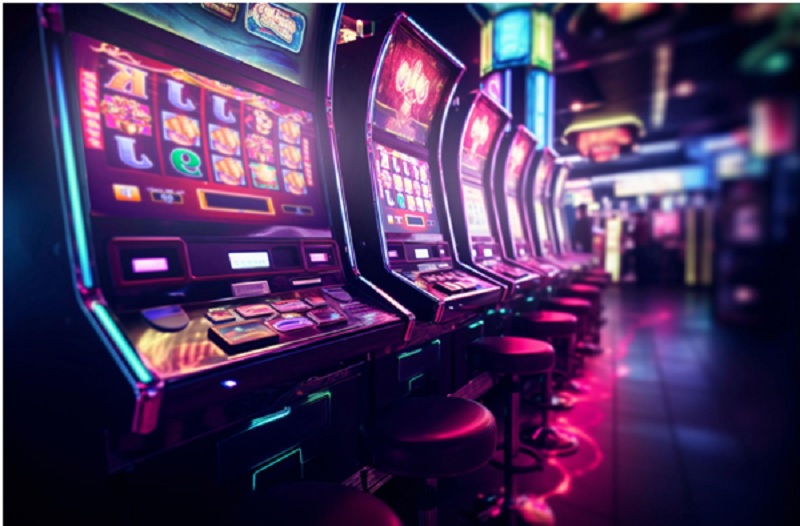
Online casino entertainment in Nigeria revolves around three core segments: slot games, live casino rooms and traditional table games. Each category appeals to different types of players, from beginners learning how to play casino games to experienced users who prefer strategic formats. As mobile casino Nigeria platforms and Android apps expand accessibility, many reviews discussing popular games reference resources such as Pin Up casino when analysing which titles Nigerian players explore most actively. More users also pay attention to modern slots and live dealer formats that combine convenience with engaging gameplay.
Slot games as a leading category in Nigeria
Pin Up slots remain the most widely played casino games online due to their simplicity, fast pace and large selection of themes. They suit both newcomers and experienced players, making them an accessible entry point for anyone exploring the online casino environment.
Why Nigerian players choose slot games
Slot entertainments offer straightforward mechanics that make learning how to play casino games easy for beginners. Key reasons for slot popularity:
- Simple rules and easy-to-understand mechanics
- Compatibility with Android and mobile casino platforms
- Wide range of themes, features and visual styles
- Fast-paced gameplay suitable for short sessions
These features allow players to enjoy slot entertainments without needing complex strategies or advanced knowledge.
Types of slot games popular in Nigeria
Nigerian players explore a wide mix of slot categories, each offering a different style of gameplay. Understanding these slot types helps players choose a format that matches their gameplay expectations and entertainment preferences.
Common slot types enjoyed by Nigerian players
- Classic fruit slots — simple three-reel games with familiar fruit symbols, BAR icons and sevens
- Video slots — modern five-reel games with animations, storylines and bonus features
- Adventure and themed slots — titles inspired by mythology, treasure hunting, history or fantasy worlds
- Crash games like Aviator — fast-paced multipliers where players cash out before the line drops
- Megaways slots — games with changing numbers of winning ways on every spin
- High-volatility slots — suitable for players who prefer infrequent but potentially larger wins
These categories offer something for every player, whether they enjoy simple three-reel mechanics or complex bonus features.
Growing interest in live casino experiences
Live formats attract players who want a more immersive and realistic environment. These Pin Up casino games combine the comfort of online play with the atmosphere of a land-based casino, allowing users to interact with real dealers and follow the action in real time.
Types of live casino games
Live casino rooms permit players to play online casino sessions with full transparency, realistic pacing and opportunities for communication. These sessions recreate the casino feeling while maintaining online convenience.
Most played live formats
- Live Roulette
- Live Blackjack
- Live Baccarat
- Game-show inspired titles
These entertainments appeal to players who enjoy authentic interaction and visual transparency. Platforms widely discussed in the Nigerian gaming community — including Pin Up — offer structured live sections where each table has clearly defined rules and gameplay formats.
Table games appealing to strategic players
Traditional table games remain popular among Nigerian players who prefer strategy-based formats. These entertainments combine elements of chance with decision-making, offering more control and deeper engagement.
Common table game selections
Players who enjoy analysing situations and applying basic strategies often choose table games. Such formats allow users to test tactics, track outcomes and develop a more structured approach to play casino sessions.
Most popular table games
- Poker
- Blackjack
- Roulette
- Baccarat
These entertainments attract players who appreciate clarity, rules and the opportunity to apply decision-making during gameplay. Many users begin with digital versions before moving to live dealer tables for a more dynamic and interactive experience.
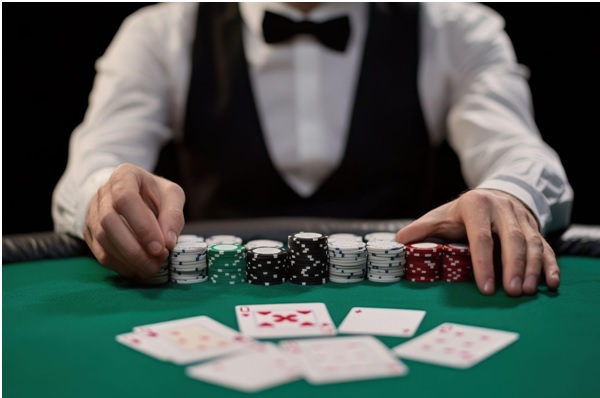
Key trends shaping Nigeria’s casino gaming landscape
In 2025, Nigerian online casino preferences remain focused on slot games, live dealer formats and traditional table entertainments. Users interested in play online casino Nigeria titles increasingly choose mobile and Android-friendly platforms where these categories are easily accessible. Discussions within the gaming community often mention Pin Up as a platform offering a wide range of options, though the core choice for players always depends on personal interests, gameplay style and responsible decision-making. Exploring different formats helps users understand the strengths of each category and enjoy an engaging and balanced online casino experience.
Sports
SuperSport to Broadcast Midweek Football Action in the Premier League and La Liga

Midweek football returns with crucial fixtures across the Premier League and La Liga, as title contenders look to maintain momentum and struggling sides fight to steady their campaigns. Fans can watch all the action live on SuperSport, exclusively on DStv and GOtv.
Premier League: Key Battles Across the Table
On Tuesday, Fulham host Man City at 8:30 p.m. City edged Leeds 3–2 at the weekend, with Phil Foden scoring twice to keep them five points behind leaders Arsenal. They now face a revitalised Fulham side who have won back-to-back matches, including a gritty 2–1 victory away at Tottenham, and are steadily pulling clear of the relegation zone. The match will air live on SS Premier League (GOtv Ch. 65, DStv Ch. 203)
Also at 9:15 p.m., Newcastle welcome Tottenham to St James’ Park. Spurs remain winless in their last seven games across all competitions and have dropped to fifth after their 2–1 home defeat to Fulham. Newcastle, meanwhile, arrive with renewed confidence after a commanding 4–1 win at Everton and continue to be one of the league’s toughest home sides. The match will air live on SS Action (GOtv Ch. 66, DStv Ch. 206)
On Wednesday, league leaders Arsenal return at 8:30 p.m. when they face Brentford at the Emirates. Arsenal were held to a 1–1 draw by Chelsea but remain firmly in control at the top. Brentford, who beat Burnley 3–1 last time out, continue to show strong form at home but have struggled to replicate those performances on the road. Watch live on SS Premier League (GOtv Ch. 65, DStv Ch. 203)
At 9:15 p.m. on Wednesday, Leeds United take on Chelsea at Elland Road live on SS Football (DStv Ch. 205, GOtv Ch. 61). Chelsea battled to a 1–1 draw against Arsenal despite going a man down, and a win here could push them into second place depending on other results. Leeds, however, have lost four straight and sit in the relegation zone, needing a turnaround to avoid deeper trouble.
Also at 9:15 p.m., Liverpool face Sunderland at Anfield. Liverpool stopped their run of defeats with a controlled 2–0 win away at West Ham and now aim to re-establish rhythm against a Sunderland side sitting near the top of the table. Sunderland edged Bournemouth 3–2 in their last outing, ending a three-game winless stretch. The match will be live on SS La Liga (GOtv Ch. 62, DStv Ch. 204)
On Thursday, Man United host West Ham at 9:00 p.m., airing live on SS Premier League (GOtv Ch. 65, DStv Ch. 203). United came from behind to beat Crystal Palace 2–1 at Selhurst Park, recording their first victory in four matches. West Ham, meanwhile, remain close to the relegation zone after a 2–0 loss to Liverpool and need a stabilising result.
La Liga: Top Contenders Face Crucial Tests
On Tuesday, Barcelona face Atlético Madrid at 9:00 p.m. Barcelona’s 3–1 win over Alavés moved them top of the table, but they now confront an Atlético side in exceptional form. Atlético have won six straight league matches and remain unbeaten in more than ten across all competitions, making them one of the most dangerous teams in Spain at the moment.
On Wednesday at 7:00 p.m., Athletic Club host Real Madrid at San Mamés. Real Madrid have drawn their last three league matches, including a 1–1 result against Girona, a run that has cost them top spot. Athletic, meanwhile, arrive after a confident 2–0 win away at Levante and continue to show strong defensive discipline. With Barcelona, Real Madrid, Villarreal and Atlético all tightly packed at the top, every point now carries significant weight. Both games air live on SS La Liga (DStv Ch. 204, GOtv Ch. 62).
Midweek Highlights
Premier League
-
Fulham vs Man City — Tue, 8:30 p.m.
-
Newcastle vs Tottenham — Tue, 9:15 p.m.
-
Arsenal vs Brentford — Wed, 8:30 p.m.
-
Leeds United vs Chelsea — Wed, 9:15 p.m.
-
Liverpool vs Sunderland — Wed, 9:15 p.m.
-
Man United vs West Ham — Thu, 9:00 p.m.
La Liga
-
Barcelona vs Atlético Madrid — Tue, 9:00 p.m.
-
Athletic Club vs Real Madrid — Wed, 7:00 p.m.
Catch Every Game
Stream every match live on select SuperSport channels or on the DStv Stream and GOtv Stream apps. Manage or upgrade your subscription via the MyDStv or MyGOtv apps, or visit www.dstv.com and www.gotvafrica.com, or dial *288# to stay connected.
-

 Feature/OPED6 years ago
Feature/OPED6 years agoDavos was Different this year
-
Travel/Tourism9 years ago
Lagos Seals Western Lodge Hotel In Ikorodu
-

 Showbiz3 years ago
Showbiz3 years agoEstranged Lover Releases Videos of Empress Njamah Bathing
-

 Banking7 years ago
Banking7 years agoSort Codes of GTBank Branches in Nigeria
-

 Economy3 years ago
Economy3 years agoSubsidy Removal: CNG at N130 Per Litre Cheaper Than Petrol—IPMAN
-

 Banking3 years ago
Banking3 years agoFirst Bank Announces Planned Downtime
-

 Banking3 years ago
Banking3 years agoSort Codes of UBA Branches in Nigeria
-

 Sports3 years ago
Sports3 years agoHighest Paid Nigerian Footballer – How Much Do Nigerian Footballers Earn








